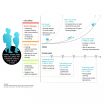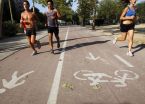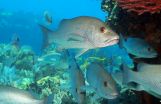(Press-News.org) The bond between humans and dogs is strong and ancient. From being the protector of the first herds in a faithful pet, dogs and people share many aspects of life. The relationship between the two species has been studied by psychologists, anthropologists, ethnologists and also by genetic and molecular biologists. In this sense, dogs are a great model for understanding the causes of human diseases, especially cancer.
Unlike other mammals used in research, dogs develop cancer spontaneously as humans do and cancer is the most common cause of death in this species. The dog genome has been obtained in recent years, but we still don't know how is controlled and regulated, what we call the epigenome.
This week the team led by Manel Esteller, director of the Program for Epigenetics and Cancer Biology (PEBC) at Bellvitge Biomedical Research Institute (IDIBELL), Professor of Genetics at the University of Barcelona and ICREA researcher, has characterized the dog's epigenome and transferred the results to human cancer to understand the changes in appearance of tumors. The finding is published this week in the journal Cancer Research.
"We have characterized the epigenome level of each nucleotide of DNA of cells from the cocker species spaniel. In these canine cells we induced a morphological change similar to what happens in cancer progression and we have seen displayed significant alterations in the modulation of genes, called epigenetic lesions "says Manel Esteller.
"The interesting thing is that when we looked the same dog genes in human breast cancer, epigenetic aberrations occur in the same regions of DNA. Data suggests the existence of common epigenetic mechanisms in both species that have been evolutionarily conserved to change the shape and consistency of our cells and tissues, "concludes the researcher.
Study results suggest that act pharmacological action on these epigenetic alterations may be helpful in slowing disease progression.
INFORMATION:
A Comprehensive DNA Methylation Profile of Epithelial-to-Mesenchymal Transition. armona FJ, Davalos V, Vidal I, Gomez A, Heyn H, Hashimoto Y, Vizoso M, Martinez-Cardus A, Sayols S, Ferreira H, J Sanchez-Mut, Moran S, Margeli M, Castilla Y, Berdasco M, Stefansson OA, Eyfjord JE, Gonzalez-Suarez Y, Dopazo J, Orozco M, Gut Y, Esteller M. Cancer Research, 2014
This news release is available in French, Spanish and German.
Low digital skills and competences among school pupils and the need to integrate effective use of information and communication technologies into teacher training are among the most pressing challenges faced by European school education today, according to a report published by the European Commission and the New Media Consortium, a US-based not-for-profit body bringing together experts in education technology. The first-ever Horizon Report Europe: 2014 Schools edition outlines the trends and technological ...
A study analysing the positive and negative effects of energy drinks on athletes has seen that, although in principle their sports performance was seen to improve by between 3% and 7%, there was also an increase in the frequency of insomnia, nervousness and the level of stimulation in the hours following competition.
The consumption of energy drinks has increased in recent years. In the case of athletes, the use of them before practising sport has also risen: more than 50% take them during training and even before competitions.
A four-year study carried out by experts ...
This news release is available in Spanish. According to a recent paper published by the researchers Aritz Urdampilleta-Otegui, PhD in Physical Education and Sports and lecturer in the Department of Physical and Sports Education of the UPV/EHU-University of the Basque Country and at the Government of the Basque Autonomous Community (region), and Saioa Gómez-Zorita, PhD in Pharmacy and Food Sciences and researcher at the UPV/EHU's Department of Pharmacy and Food Sciences, it is necessary to control the administering of drugs that interact with the foods consumed and which ...
Barely perceptible low-frequency signals nevertheless activate measurable responses in our auditory circuits. Neurobiologists at Ludwig-Maximilians-Universitaet (LMU) in Munich have now characterized the remarkable impact of low-frequency sounds on the inner ear.
The human auditory system appears to be poorly adapted to the perception of low-frequency sound waves, as hearing thresholds become markedly higher for frequencies lower than about 250 Hz. Yet sensory cells do react to pressure waves with frequencies below 100 Hz, as revealed by the fact that such signals actually ...
A new test developed by researchers from the University of Manchester could revolutionise the discovery of new prescription drugs. The test will help determine which drugs are unlikely to work at an early stage, speeding up the time it takes to make safe and effective medicines available. The findings are published online in the journal Metabolomics.
The Pharmaceuticals industry is worth billions of dollars a year. The main source of prescription medicines comes from what are known as 'small molecule' drugs, such as statins and antibiotics.
The main problem for ...
AUDIO:
These are gray snapper larval growls recorded in the field.
Click here for more information.
MIAMI – A new study from researchers at the University of Miami (UM) Rosenstiel School of Marine and Atmospheric Science is the first to document that fish larvae produce sound. These "knock" and "growl" sounds may help small larvae maintain group cohesion in the dark.
"Although many adult fishes produce sounds, no one has previously considered that larvae, too, may be sound ...
For decades, research has generally focused on individual, family and peer factors to explain illicit drug use, neglecting neighborhood factors as a cause. While the scant previous research on neighborhood factors and illicit drug use has focused on facets such as crime and socio-demographic characteristics, none has explored the associations between the perceived frequency of drug sales, drug use, and peer attitudes towards drug use. Now a study out of New York University's Center for Drug Use and HIV Research (CDUHR), address this paucity in the research.
Published ...
Schizophrenia and bipolar disorder both appear to be associated with dendritic spine loss in the brain, suggesting the two distinct disorders may share common pathophysiological features, write author Glenn T. Konopaske, M.D., and colleagues at McLean Hospital, Belmont, Mass., and Harvard Medical School, Boston.
The dendritic spines play a role in a variety of brain functions. Previous studies have observed spine loss in the dorsolateral prefrontal cortices (DLPFCs) from individuals with schizophrenia (SZ). To determine whether spine pathology happens in individuals with ...
EAST LANSING, Mich. --- New research suggests dear old Mom and Dad could be the auto industry's secret weapon.
The study, co-authored by Michigan State University economist Soren Anderson, found children are 39 percent more likely to buy a particular brand of automobile if their parents bought that brand.
This surprisingly strong correlation could have implications for automakers' marketing efforts. In absence of this inherited brand loyalty, a sensible strategy might be to "invest in young consumers and harvest old consumers" – that is, lower prices on entry-level ...
A group of researchers from Switzerland has thrown light on the precise mechanisms responsible for the impressive ability of nanoparticles to detect fingermarks left at crime scenes.
Publishing their results today, 2 October, in IOP Publishing's journal Nanotechnology, the researchers have provided evidence contesting the commonly accepted theory that nanoparticles are attracted to fingermarks electrostatically.
The attraction, they claim, is in fact chemical and is caused by compounds on the surface of nanoparticles bonding with a complex cocktail of compounds present ...




